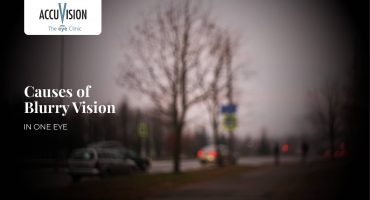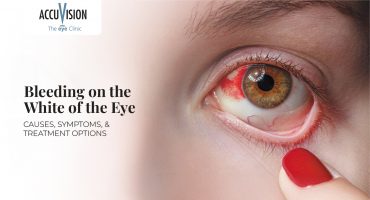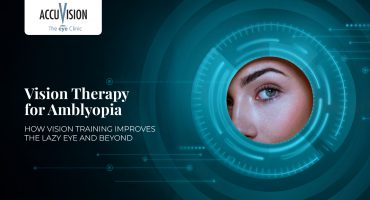- Common Age-Related Vision Problems
- How to Maintain Eye Health Over 30s , 40s , 50s
- When to Seek Professional Help
- Conclusion
- FAQs
- References:

Ageing is a natural part of life, but many people are surprised when they first notice changes in their vision as they reach their 40s. Whether it’s struggling to read small print or noticing increased sensitivity to glare, these shifts can be unsettling. Understanding vision problems after 40 is essential for maintaining quality of life and protecting long-term eye health.
As we age, our eyes undergo structural and functional changes that can affect how we see the world. Some of these changes may indicate the beginning of conditions that need medical attention, while others are completely normal. This comprehensive guide explores common age-related vision problems, explains why they occur, and provides practical advice for maintaining eye health over 50. We’ll also offer detailed information about presbyopia to help you navigate one of the most common age-related vision changes. By staying informed and proactive, you can take meaningful steps to preserve your sight for years to come.
If you notice sudden or concerning changes in your vision, it’s essential to seek medical advice from licensed eye care professionals like AccuVision. This article provides general information to help you understand age-related vision changes and available treatments.
Common Age-Related Vision Problems
Several vision conditions become more prevalent as we age. Recognising the symptoms early can lead to timely intervention and better outcomes.
Presbyopia
Presbyopia is the most common age-related vision change experienced after 40. It occurs when the lens loses flexibility and the ciliary muscles weaken, making it difficult to focus on close objects, such as reading a book or viewing a mobile phone screen. Nearly everyone experiences presbyopia to some degree, and it typically becomes noticeable in our early to mid-40s. Common symptoms include difficulty reading small print, holding materials at arm’s length, eye strain, headaches, and needing brighter lighting.
Correction options are varied and effective, including reading glasses, bifocals, progressive (varifocal) lenses, and multifocal contact lenses. For those seeking more permanent solutions, surgical options like blended (mono) vision LASIK or lens replacement procedures may be considered. Managing presbyopia also involves practical steps such as ensuring adequate lighting, taking breaks during close work, keeping reading glasses accessible, and enlarging text on digital devices to reduce eye strain.
Cataracts
This condition involves the gradual clouding of the eye’s natural lens, leading to blurred or dimmed vision Increased sensitivity to glare and difficulty seeing at night Cataracts develop slowly and are highly prevalent in people over 60, though they can begin forming earlier
Glaucoma
Characterised by increased pressure within the eye, which can damage the optic nerve over time Often progresses without noticeable symptoms in its early stages, making regular eye examinations crucial Peripheral vision loss is typically the first sign Without treatment, glaucoma can lead to irreversible vision loss
Age-related Macular Degeneration (AMD)
Affects the central portion of the retina, called the macula, leading to loss of central vision Makes activities such as reading, recognising faces, and driving increasingly difficult AMD is the most common cause of vision loss in people over 50
Dry Eye Syndrome
Becomes more common with age due to reduced tear production and changes in tear quality Symptoms include a gritty sensation, redness, and fluctuating vision Hormonal changes, for example in women after menopause, can exacerbate dry eyes
How to Maintain Eye Health Over 30s , 40s , 50s
Preserving vision and preventing or slowing the progression of age-related conditions requires a holistic approach to eye health over 50.
Regular eye examinations are crucial for proactive eye care:
- Adults over 50 should have comprehensive eye exams at least every two years, or more frequently if they have existing conditions or risk factors
- These exams can detect early signs of glaucoma, AMD, cataracts, and other conditions before symptoms become apparent, allowing for timely intervention
Nutritional support plays a vital role in maintaining healthy eyes:
- Lutein and zeaxanthin, carotenoids found in leafy green vegetables, are concentrated in the macula and help protect against AMD
- Omega-3 fatty acids, abundant in oily fish such as salmon and mackerel, support retinal health and may reduce dry eye symptoms
- Vitamins C and E, powerful antioxidants, help protect eye cells from oxidative stress
- Zinc supports overall retinal function
- A balanced diet rich in colourful fruits and vegetables provides these essential nutrients naturally
Lifestyle adjustments can significantly impact long-term eye health:
- Quit smoking, as it dramatically increases the risk of cataracts, AMD, and other eye diseases
- Manage chronic conditions such as diabetes and high blood pressure to help prevent diabetic retinopathy and hypertensive retinopathy
- Wear sunglasses that block 100% of UVA and UVB rays to protect against cataracts and AMD. Even on cloudy days, UV protection remains essential
Exercise and general health are closely linked to eye health:
- Regular physical activity improves circulation, helping to maintain healthy blood flow to the eyes and reducing the risk of conditions like glaucoma and diabetic retinopathy
- Maintaining a healthy weight and managing stress contribute to overall well-being, which supports eye health
Screen use and ergonomics remain important even after 50:
- Follow the 20-20-20 rule: every 20 minutes, look at something 20 feet away for at least 20 seconds
- Adjust screen brightness and contrast to comfortable levels
- Position screens slightly below eye level to reduce strain
- Consider using artificial tears if digital device use exacerbates dry eye symptoms
When to Seek Professional Help
While many age-related vision changes develop gradually, certain symptoms warrant immediate professional attention. Early detection and treatment can prevent permanent damage and preserve sight.
Warning signs that require prompt evaluation include:
- Sudden vision loss or significant vision changes may indicate retinal detachment, stroke, or other serious conditions
- Flashes of light or a sudden increase in floaters may indicate retinal tears or detachment
- Persistent or severe eye pain, redness, or discomfort may indicate infection, acute glaucoma, or inflammation
- Seeing halos around lights, particularly at night, can be an early sign of cataracts or glaucoma
- Difficulty with night vision or adapting to changing light levels may suggest retinal problems or early cataracts
- Gradual loss of peripheral vision is a hallmark of glaucoma that requires urgent assessment
Early detection is particularly crucial for conditions such as glaucoma and AMD, as damage from these diseases is often irreversible. Regular screening enables eye care professionals to monitor subtle changes and implement treatment strategies before significant vision loss occurs from cataracts. While not an emergency, timely intervention can restore vision and improve the quality of life when the condition begins to interfere with daily activities.
If you experience any concerning symptoms or notice gradual changes in your vision, consulting an eye specialist ensures a personalized assessment and management. A thorough examination provides peace of mind and allows for tailored recommendations based on your individual circumstances and risk factors.
Conclusion
Vision problems after 40 are common, but they need not be inevitable or unmanageable. By understanding the changes that occur with ageing and following a comprehensive presbyopia guide, you can adapt confidently to new visual needs. Maintaining eye health over 50 requires a proactive approach that combines regular eye examinations, proper nutrition, lifestyle modifications, and awareness of warning signs.
Your eyes are irreplaceable, and preserving your vision is an investment in your independence, safety, and quality of life. Whether you’re navigating the early stages of presbyopia or managing more complex age-related conditions, professional guidance ensures the best possible outcomes.
Don’t wait for symptoms to worsen, schedule regular eye exams at AccuVision UK, where our expert team of ophthalmologists and optometrists, with over 23 years of experience across London, the Midlands, and Yorkshire, ensures medically accurate care and guidance to help you maintain clear, comfortable vision well into later years.
FAQs
1. What are the most common vision problems after 40?
Common issues include presbyopia, cataracts, glaucoma, age-related macular degeneration (AMD), and dry eye syndrome Early detection is key to managing these conditions
2. How can I manage presbyopia effectively?
Use reading glasses, bifocals, progressive lenses, or multifocal contact lenses Ensure adequate lighting and take regular breaks during close work Enlarge text on digital devices to reduce eye strain
3. How often should I have an eye exam after 50?
Comprehensive eye exams are recommended at least every two years More frequent exams may be needed if you have existing conditions or risk factors Regular check-ups help detect glaucoma, AMD, and cataracts early
4. Can lifestyle changes improve age-related vision problems?
Yes, lifestyle changes can help Maintain a balanced diet rich in lutein, zeaxanthin, omega-3s, vitamins C and E Wear UV-protective sunglasses, manage chronic conditions, quit smoking, and exercise regularly
5. When should I see an eye specialist urgently?
Seek help if you experience sudden vision changes, flashes of light, increased floaters, severe eye pain, halos around lights, or gradual loss of peripheral vision Early intervention can prevent permanent damage.
References:
BrightFocus Foundation (n.d.) Macular degeneration: Facts & figures. Available at: https://www.brightfocus.org/macular/facts-figures/?utm_source=chatgpt.com (Accessed: 30 September 2025).








